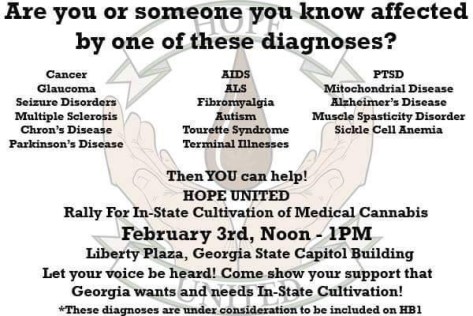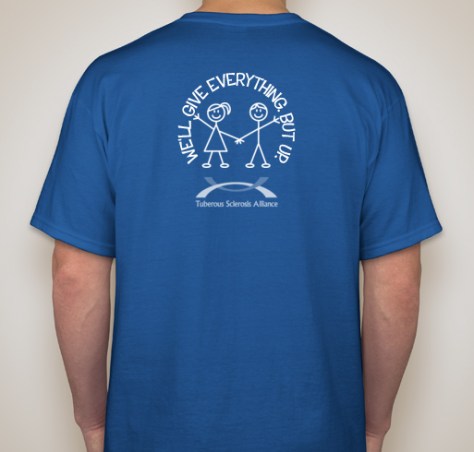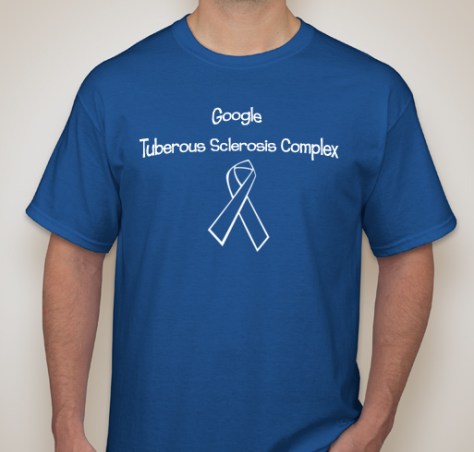Day 29 of Blogging For TSC Awareness
by guest blogger Rebecca Thereault
For all we have lost, there are great treasures that remain.
 Tuberous Sclerosis Complex (TSC) hijacked our daughter’s genome. Like the lowliest of thieves, it stole from an innocent baby. It’s haul? A base pair on her TSC2 gene on her 16th chromosome, to be exact. Two tiny amino acids that shifted her genetic code and forever hindered her ability to suppress tumor growth in her body. Funny thief–one that gives more than it takes. What TSC took has caused tumors to grow in her heart, brain, skin, and kidneys; it has caused epilepsy, heart failure, autism, developmental delay, and more. It’d be easy to hate such a thief and sometimes I do give in to the loathing. What I have learned, what Kaleigh has taught me in her 5 and a half years, is that for all we have lost, for all that TSC has taken, for every hurdle, for every burden, we have also gained.
Tuberous Sclerosis Complex (TSC) hijacked our daughter’s genome. Like the lowliest of thieves, it stole from an innocent baby. It’s haul? A base pair on her TSC2 gene on her 16th chromosome, to be exact. Two tiny amino acids that shifted her genetic code and forever hindered her ability to suppress tumor growth in her body. Funny thief–one that gives more than it takes. What TSC took has caused tumors to grow in her heart, brain, skin, and kidneys; it has caused epilepsy, heart failure, autism, developmental delay, and more. It’d be easy to hate such a thief and sometimes I do give in to the loathing. What I have learned, what Kaleigh has taught me in her 5 and a half years, is that for all we have lost, for all that TSC has taken, for every hurdle, for every burden, we have also gained.
Before I go any farther, I need to pause here and clarify my  dangerously close to sounding Pollyanna statement that I have gained things from TSC. TSC is a devastating, incurable (currently) disease. I am not thankful for what it has done to our daughter. It has nearly taken her life on more than one occasion. AND, I have gained things as an individual, we have gained things as a family, that I and we would not have otherwise. I could write about the seizures, the MRIs, the hospital stays, the therapies, the behaviors, the terror of it all, the need for more research, the scientific advances, or why this disease should matter to you. In some ways those issues are easier to articulate–there is a concreteness. But, when I think of what the presence of TSC in our lives has really meant and truly taught me, I think about the “and” of life. It is the idea that there is no darkness without light, no joy without pain, there are and must be both. Kaleigh and TSC are inexplicably entwined–it is literally weaved through the double helix of her DNA. AND, she is not TSC.
dangerously close to sounding Pollyanna statement that I have gained things from TSC. TSC is a devastating, incurable (currently) disease. I am not thankful for what it has done to our daughter. It has nearly taken her life on more than one occasion. AND, I have gained things as an individual, we have gained things as a family, that I and we would not have otherwise. I could write about the seizures, the MRIs, the hospital stays, the therapies, the behaviors, the terror of it all, the need for more research, the scientific advances, or why this disease should matter to you. In some ways those issues are easier to articulate–there is a concreteness. But, when I think of what the presence of TSC in our lives has really meant and truly taught me, I think about the “and” of life. It is the idea that there is no darkness without light, no joy without pain, there are and must be both. Kaleigh and TSC are inexplicably entwined–it is literally weaved through the double helix of her DNA. AND, she is not TSC.
 I was 29 weeks pregnant when the ultrasound technician said she needed to call down a specialist because there was something wrong with our baby’s heart. It was the first time we were introduced to TSC. It was as though a vortex opened and sucked away all our hopes and dreams and left us empty and terrified. Perspective, and time, have changed these memories for me. I see now the seedlings of “and.” We were devastated and hopeful. Terrified and determined.
I was 29 weeks pregnant when the ultrasound technician said she needed to call down a specialist because there was something wrong with our baby’s heart. It was the first time we were introduced to TSC. It was as though a vortex opened and sucked away all our hopes and dreams and left us empty and terrified. Perspective, and time, have changed these memories for me. I see now the seedlings of “and.” We were devastated and hopeful. Terrified and determined.
At the time, it felt like a lie to even smile. I was stymied by the  darkness, the anger, the overwhelming devastation. I told no one at my baby shower, only immediate family knew. I spent the day opening presents for a child I was told may not survive. I smiled for the camera as I checked my watch because I had to run back to the hospital to receive the second of two shots intended to develop her lungs and give her more of a fighting chance. All I was able to focus on was the insincerity of my joy. Now I see this was my first introduction to the “and” of TSC. Both were true. I was terrified and excited. I was alone and simultaneously surrounded by love. This would be our life with Kaleigh and TSC–the presence of two seemingly opposite experiences coexisting.
darkness, the anger, the overwhelming devastation. I told no one at my baby shower, only immediate family knew. I spent the day opening presents for a child I was told may not survive. I smiled for the camera as I checked my watch because I had to run back to the hospital to receive the second of two shots intended to develop her lungs and give her more of a fighting chance. All I was able to focus on was the insincerity of my joy. Now I see this was my first introduction to the “and” of TSC. Both were true. I was terrified and excited. I was alone and simultaneously surrounded by love. This would be our life with Kaleigh and TSC–the presence of two seemingly opposite experiences coexisting.
 Kaleigh was born pink and screaming, and it has been one wild ride since. The overwhelming joy of taking her home matched with the horror of a PICU stay for heart failure. Over the past five years, we’ve experienced innumerable times when we were faced with two seemingly opposite and incompatible experiences vying for our attention. It was a struggle for me to find the joy amid so much pain. What I found is that life is in the balance. It is in the “and.” If I let my anger at TSC overcome me, then I am blinded to the appreciation, pride, and joy of seeing Kaleigh achieve and progress. If I succumb to the stress and fall apart after she seizes for two hours straight, I miss her tiny waking first word of “uh-oh.” If we accept that there is no cure, then we lose hope and the drive to keep raising funds and lobbying for research.
Kaleigh was born pink and screaming, and it has been one wild ride since. The overwhelming joy of taking her home matched with the horror of a PICU stay for heart failure. Over the past five years, we’ve experienced innumerable times when we were faced with two seemingly opposite and incompatible experiences vying for our attention. It was a struggle for me to find the joy amid so much pain. What I found is that life is in the balance. It is in the “and.” If I let my anger at TSC overcome me, then I am blinded to the appreciation, pride, and joy of seeing Kaleigh achieve and progress. If I succumb to the stress and fall apart after she seizes for two hours straight, I miss her tiny waking first word of “uh-oh.” If we accept that there is no cure, then we lose hope and the drive to keep raising funds and lobbying for research.
With TSC we have lost much of the simplicity of life, yet have gained a rich complexity. We have gained the camaraderie of others who walk this journey with us. My view of life has widened. When I look at others, I think of the “and.” I wonder what is behind the anger of that not-so-nice lady in the checkout at the grocery store and I try (some days are easier than others) to offer grace. The “and” has reverberated through our family. Our son is quick to help other children and befriend those who are often excluded. At the same time, he has spent many a night crying after nightmares of his sister seizing. My husband and I have worked to raise awareness and fundraise for TSC research. And we have worried and lamented over the never-ending medical bills. No where is the “and” more apparent than in Kaleigh. Her love for life is as palpable as the heartbreaking panic she experiences at the mention of the word doctor. She is loss and hope personified.
Joy and pain. Love and hate. Jubilation and sadness. Dependence and freedom. Trust and betrayal. Jealousy and contentment. Life and death. Fight and acquiescence. These are the lesson I have been gifted. Our life with TSC is heartbreaking and beautiful. Most of all it is a balance–what we have lost AND what we have gained.





















